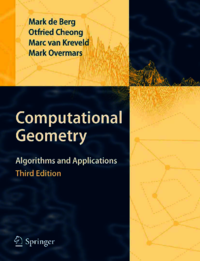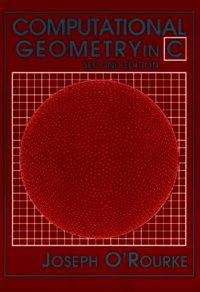Categoría "Geomtría Computacional"
Se han encontrado 4 Coincidencias
Computational Geometry - Algorithms and Applications
136 Visitas | 176 Descargas | 2014-02-17 21:03:26 | ycid
Computational geometry emerged from the field of algorithms design and analysis in the late 1970s. It has grown into a recognized discipline with its own journals, conferences, and a large community of active researchers. The success of the field as a research discipline can on the one hand be explained from the beauty of the problems studied and the solutions obtained, and, on the other hand, by the many application domains—computer graphics, geographic information systems (GIS), robotics, and others—in which geometric algorithms play a fundamental role. For many geometric problems the early algorithmic solutions were either slow or difficult to understand and implement. In recent years a number of new algorithmic techniques have been developed that improved and simplified many of the previous approaches. In this textbook we have tried to make these modern algorithmic solutions accessible to a large audience. The book has been written as a textbook for a course in computational geometry, but it can also be used for self-study.

Computational Geometry in C
96 Visitas | 168 Descargas | 2014-02-17 21:06:52 | ycid
This is classic textbook in Computational Geometry, the author O´Rourke is a pioneer in the subject. The book covers the basic theory and an implementation in C of the algorithms.

Computational Geometry Methods and Applications
115 Visitas | 173 Descargas | 2014-02-17 21:09:00 | ycid
This book is concentrated on four major directions in computational geometry the construction of convex hulls proximity problems searching problems and intersection problems

Computational Geometry
99 Visitas | 120 Descargas | 2014-02-17 21:10:33 | ycid
What is Computational Geometry? Computational geometry is a term claimed by a number of different groups. The term was coined perhaps first by Marvin Minsky in his book “Perceptrons”, which was about pattern recognition, and it has also been used often to describe algorithms for manipulating curves and surfaces in solid modeling. Its most widely recognized use, however, is to describe the subfield of algorithm theory that involves the design and analysis of efficient algorithms for problems involving geometric input and output.
Contribuir
Usted puede contribuir con Libros UCLV, es importante para nosotros su aporte..
Contribuir